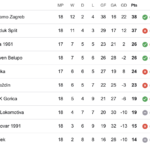Fine wine, flavoursome food and villages with a hundred tales to tell. Baranja is the relaxed, rural escape you never knew you needed.
- Welcome to Baranja Croatia!
- Rural tourism (Seoski turizam): the family farms of Baranja (OPGs)
- The unique landscape and winemaking tradition of northern Baranja
- A landscape shared
- Baranja towns and places to visit
- Regional cuisine: what to try
- Tour the region on Croatia’s oldest passenger train: Osijek – Pécs (Hungary) via Beli Manastir
- Day trips
- Where to stay?
- Where is Baranja Croatia? Baranja map
- How to get to Baranja and get around
Welcome to Baranja Croatia!
Alongside the region of Srijem, you can’t get much further from the regular footfall of Croatia’s tourists than Baranja. It’s a long way from the coast. In fact, Baranja is the most northeasterly of all Croatia’s regions. It shares borders both Hungary and Serbia and is the only region in Croatia to do so. However, this is not the only unique aspect to Baranja.

There are no cities in Baranja. There are not even any of the towns that masquerade as cities, which you can find elsewhere in Croatia. Instead, Baranja is a land of rolling green and yellow fields, rivers and wetlands, and traditional villages. Here, you’ll find a natural landscape and a people living harmoniously within it. They’ve been doing this for centuries.

Indeed, Baranja today probably doesn’t look too dissimilar to how it did 100 years ago. It is unspoiled by the trappings of modern existence and unhurried by the fast pace of life you’ll find elsewhere. And, this is what makes Baranja such a great place to discover. Centuries of experience go into the production of Branja wine and food. This is not a five minute urban burger and fries to eat on the go. This is a five hour stew, made carefully from ingredients plucked fresh from the countryside and presented in scene with a 100 stories to tell. Sit down, relax, breath the fresh air and listen to just some of those stories..
Baranja in Croatia

Important to note that Baranja is the name of a traditional region. Today, that region is split between two countries – Croatia and Hungary. Specifically, this guide is about Croatian Baranja. However, Baranja is made up of several different communities that live side-by-side. The rich culture and cuisine of the Baranja region is a product of this melting pot of communities. By and large, over a very long period of time, the peoples of this region have lived together as harmoniously as they do with their natural surroundings.
Rural tourism (Seoski turizam): the family farms of Baranja (OPGs)
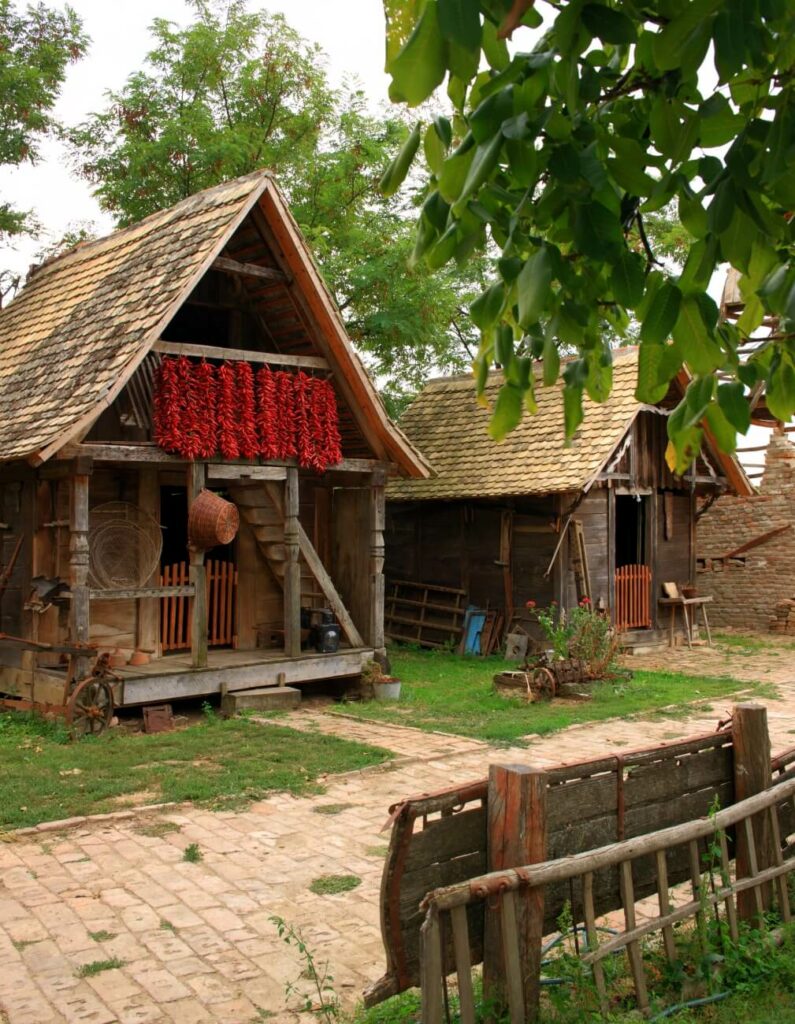
Hedge-lined roads and fruit tree orchards. Neat rows of vines. Fields of crops with sharply contrasting colours. The landscape of Baranja is only so picturesque because of the people who live in it. It’s their endeavours that shape it. And while some agriculture here exists on a grand scale, many families also make the most of small plots of land.

Baranja family farms or OPGs preserve the traditions of the region. Not only do they do this in the way they use the land, but also in the produce that results. Practices and recipes on such family farms are often passed down from generation to generation. Traditional bakery, butchery and beekeeping are just some of the secrets you can discover. Not to mention, the best white wine in Croatia and hands down the best restaurants you’ll find here. To learn out how they do it, and to try the truly traditional flavours of the region, go to an OPG. It’s an essential part of any visit to Baranja. Subsequently, we’ll be recommending several in the following guide…
The unique landscape and winemaking tradition of northern Baranja
Surduk

Unlike its neighbour, Slavonia, the region of Baranja is not entirely flat. Baranja Mountain stretches in a northeast-southwest direction between Beli Manastir and Batina. It is 21 kilometres long and three kilometres wide. Much of its slopes are lined with pretty rows, the telltale signs of agriculture. Predominantly, they’re vines, just some of those contributing to Croatia’s greatest white white region.
Long ago, heavy rains began to produce natural gorges as water ran off the mountain. These gorges cut through the ground. Over time, some became considerably deep, widened by the regular flow of water and, sometimes, mud. Eventually, these gorges passageways between hillsides. Horses and carts began to travel the routes. Although, only one at a time. The passageway was too narrow for one cart to pass another. A boy would be sent ahead to check another cart was not making the journey. At the end, he would stop any attempting, until his master’s cart had first passed.

In Croatia, these narrow routes are exclusive to the Baranja region and are very pretty to walk. Their walls are lined with tree roots, which stop them from collapsing. The branches and leaves of these trees often overhang the gorge, sometimes giving you the impression you’re in a tunnel. Such a route in Baranja is known as a Surduk.
Gator

On this same ground, you’ll find another phenomenon unique to Baranja. A Gator is a traditional wine cellar of this region. Sometimes found on the lower course of a Surduk, a Gator is unlike a typical wine cellar. It has no subterranean section where you store the wine. Instead, a Gator extends back into the hillside. Wine is kept in the deepest recesses of the building, where it is coolest.
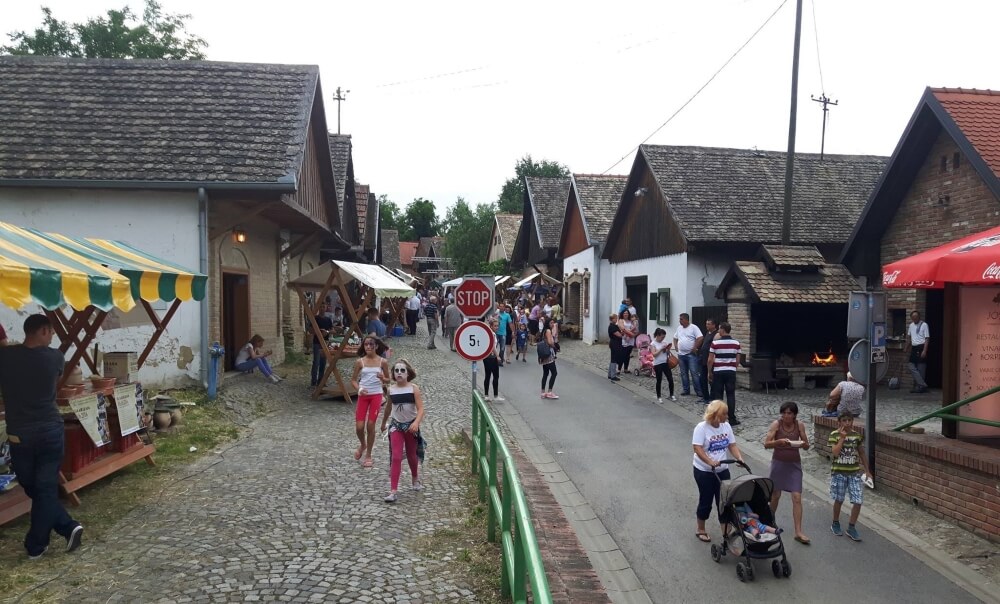
In several places in Baranja you can see a street with many of these buildings side by side. Usually, each Gator is owned by a different family and each will make their own particular family wine. Today, a Surduk filled with Gators is recognised as a unique part of the culture and tourist offer of the Baranja region. You will not see anything like them anywhere else in Croatia. Consequently, you’ll today find several key cultural events of the region taking place within such streets. Furthermore, you’ll even come across Gators that have been repurposed as accommodation, where you can stay overnight. Generally, they are decorated in a most charming manner.

Baranja wine

You probably haven’t heard of Baranja wine. Actually, you might not even have heard of wine from Slavonia, the much larger region neighbouring Baranja. In truth, Baranja doesn’t shout too much about its wine. Because there’s not too much of it to go around, probably (the exception being famous, large producer Belje). There’s a well-known saying in Croatia about this. It roughly translates as “Just enough for us and our guests”.

But, make no mistake, this is a benchmark region for Croatian wine. If you’re looking for the best white wine in Croatia, then you simply must head on east. Much of the best Baranja wine comes from relatively small producers. Go and try their wine. Many are adapted well to visitors and you’ll be shown around their cellars. Graševina is the name of the wine most popularly made here. Indeed, it is very drinkable and you can find some great examples. But, you’ll be offered a choice. If you’re looking for something that might make a greater impression, then be sure to try Baranja Sauvignon or their special blend (cuvee) of reds.
A landscape shared

In Baranja you’ll find evidence that may counter what you think you know about this section of the Balkans. Namely, throughout this whole territory, you’ll see proof that peoples of different ethnic backgrounds have peacefully coexisted here for hundreds and hundreds of years.

In truth, the Christian people of this part of Europe were historically never predisposed to fighting among themselves. Well, with the powerful Ottoman Empire on your doorstep, there were much greater concerns than your neighbour’s choice between the Catholic, Orthodox or Hungarian denominations. In fact, the rivalry between them is actually an unnatural and quite modern phenomenon. Specifically, it’s the result of manipulations by scheming and expansionist state leaders only from within the past 150 years.

Nowhere is this more clearly displayed than in the churches of Baranja. In many small communities, such as Kneževi Vinogradi (pictured above), you’ll see two or even three churches of similar height and build. But, each with distinctly different decoration. This denotes the historic – and also the current – presence of different religions in this place. See if you can guess to which denomination each building belongs.
Baranja towns and places to visit
Bilje

Just a short trip up the road from Osijek, Bilje is a bolthole for residents of the Slavonian capital. More often than not, if you’re looking for a traditional meal in the countryside, this is where you’ll come. Certainly, the wetlands Nature Park Kopački rit is a big part of the municipality’s draw. So too, the range of great restaurants. But, also Bilje has great OPGs, like accommodation option Farm Stay Lacković and the blissful OPG Čudesna šuma. If you want to know what it’s like meeting the llamas at the latter, then read here. Also, Bilje has two small castles, one within a Habsburg hunting estate. Small place, big offer.
Suza

Although relatively small, the village of Suza has a few unique secrets. The least well-hidden of these is the Kolar winery. Go and try the food of their restaurant on the terrace. You’ll not get bored of trying their excellent and renowned range of wines. Perhaps the least famous aspect of the business is they have a nice campsite just a few hundred metres down the road. If one of the best offers in your village is a trip to the butchers, then you might have low expectations. Not in Suza. At the Matijević butchers you can see and learn about the traditional making of authentic Baranja specialties like kulen. Enjoy them on the lovely terrace with a glass of good wine.

Zmajevac

In some parts overlooking the Danube, Zmajevac is one of the most famous winemaking places in the region. In fact, there are at least three esteemed wineries you can visit here. Namely, Vina Gerstmajer, Vina Kalazić and Restoran Vinarija Josić. Definitely, you won’t try a bad drop of wine at any of these three established makers. Furthermore, a tour of the cellars can be fascinating. Also, the Josić restaurant is rated highly for regional fare. But, even those these three might be the best established, certainly, they are not the only winemakers here. In fact, there’s a whole Surduk full of Gator cellars in Zmajevac. It’s a popular place for events and there’s another good restaurant option here. Also, you can stay overnight in one Gator converted to accommodate guests.

Karanac

Over recent years, earning itself a reputation as an ethno-village, Karanac, in Kneževi Vinogradi is experienced in welcoming visitors. If you’re looking for a taste of traditional Baranja life, then this is a good choice. Surrounding fields are full of the colours of agriculture. By comparison, in the village itself, you can walk between classic buildings or beneath a cherry tree orchard. One highlight is Baranjska kuća, a restaurant with a long reputation for regional cuisine. Also, they have a courtyard that preserves village heritage. Elsewhere, you can drive by horse and cart or stay in fully equipped rooms that retain an authentic rural and regional decoration.

Kopačevo

100 years ago, Kopačevo’s economy was centred around fishing. But, since the nearby wetlands were designated a Nature Park, the village has adapted. Today, the village services the Kopački rit Nature Park’s many visitors. Offering OPGs, accommodation and traditional food, it’s a blissful stop-off. Furthermore, you can stock up on paprika here. The village has quite a reputation for it. Also, look out for their Fishing Days festival in early September. There, you’ll see traditional skills and cuisine preserved. If you want to read more about Kopačevo, then look here.
Kopački rit Nature Park

Occupying the flood land immediately before the Drava and Danube, Nature Park Kopački rit is one of Europe’s largest wetlands. Although home to many different types of life, it is most famous for its bird population. As many as 300 different species of birds inhabit the park, many of them being migratory and nesting species. Of particular note, a large colony of grey heron and the largest population of woodpeckers in the entire Danube basin.

You can tour the park by bike, canoe, boat or on foot. Every time you visit it will be different. The park’s landscape and wildlife population change dramatically with the seasons. If you want to learn more about the park, then read our detailed guide.
Batina memorial

Authored by Croatian sculptor Antun Augustinčić, this memorial commemorates the Battle of Batina. It was one of the fiercest battles of the Second World War. An imposing obelisk, erected in 1947 on the ‘Gradac’ plateau, the monument overlooks the Danube and three countries. Namely, Hungary, Serbia and Croatia. The monument consists of much more detail than just the central pillar and statue. In fact, the components and view of the memorial are so epic, no single photo could capture its scale. In order to fully appreciate it, you simply have to visit.

Beach on the old Danube in Draž

Who says you need the sea? You’ll find a lovely river beach on the old Danube in Draž. Appointed with a wooden bridge, jetty and other amenities quite recently, its waters are safely away from the main flow of the giant Danube. You can play volleyball on the sand and buy drinks from a summertime beach bar..
Regional cuisine: what to try
Paprika
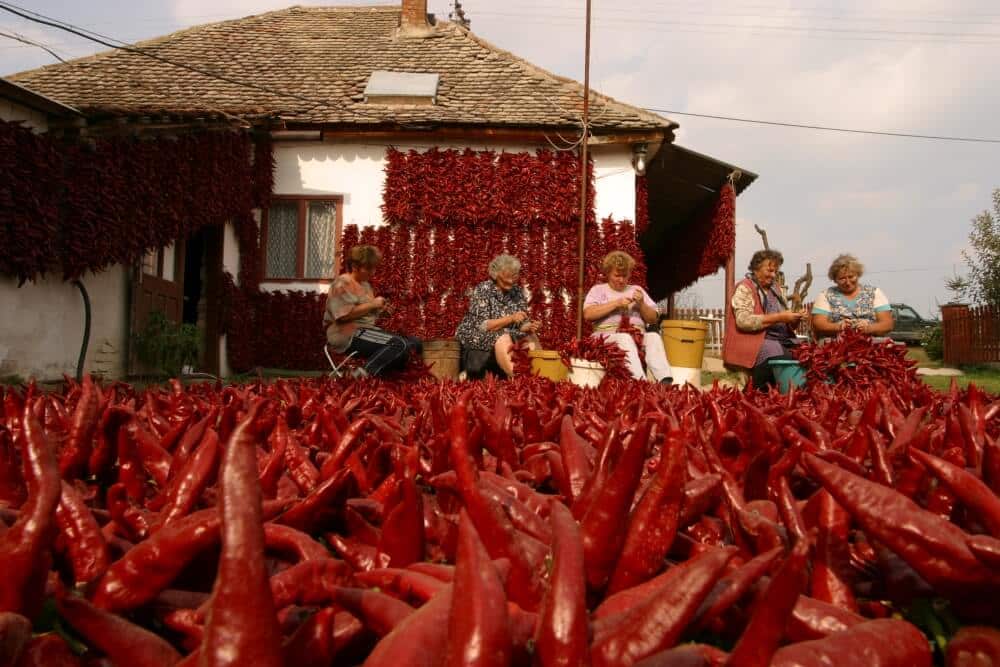
Generally, food in Croatia can be a little conservative in its flavour. Not so in Baranja, and nearby parts of Slavonia. Here you’ll find Croatia’s spiciest food. The reason? Paprika.
Some attribute this influence of flavour to the area’s close proximity to Hungary. Well, that’s a matter of perspective. Certainly, Baranja was once part of Hungary. But, then, so too was this country once part of the Austro-Hungarian empire. What we can say, for sure, is that paprika-rich dishes and the production of paprika powder are traditional here.

The peppers used in the region’s paprika production are specific. Notably, they are quite unlike the rounded ‘bell’ peppers many see in supermarkets. Instead, local peppers are generally longer, more pointed and with thinner flesh. As a result, they dry easier in the sun. You’ll find the paprika powder they produce in many local dishes, from soups and stews to sausages like kulen.
Traditional food of the Baranja region

Among the best dishes to look out for are the following local specialties. Fiš paprikaš (spicy river fish stew), šaran u rašljama (butterflied carp, cooked over an open fire) and čobanac (spicy stew made from wild meats like boar and deer).

Also, you might find frogs, duck and home-farmed chicken on the menu. Another specialty is the regional black pig. So too, pork sausages, smoked, dried and flavoured with garlic and/or paprika. King of these is a sausage called kulen. They reserve only the finest cuts for this. Irregular in shape, the one from Baranja is Croatia’s best.

Restaurants
You won’t find a shortage of places where you can try traditional food in Baranja. As a result, the standard is generally high. Ask a local for a recommendation. Or, look out for a place with a terrace full of diners. If you want to see the options in Bilje municipality, then look here. You’ll find a bigger list of Baranja restaurants here, and Osijeck-Baranja County restaurants here.
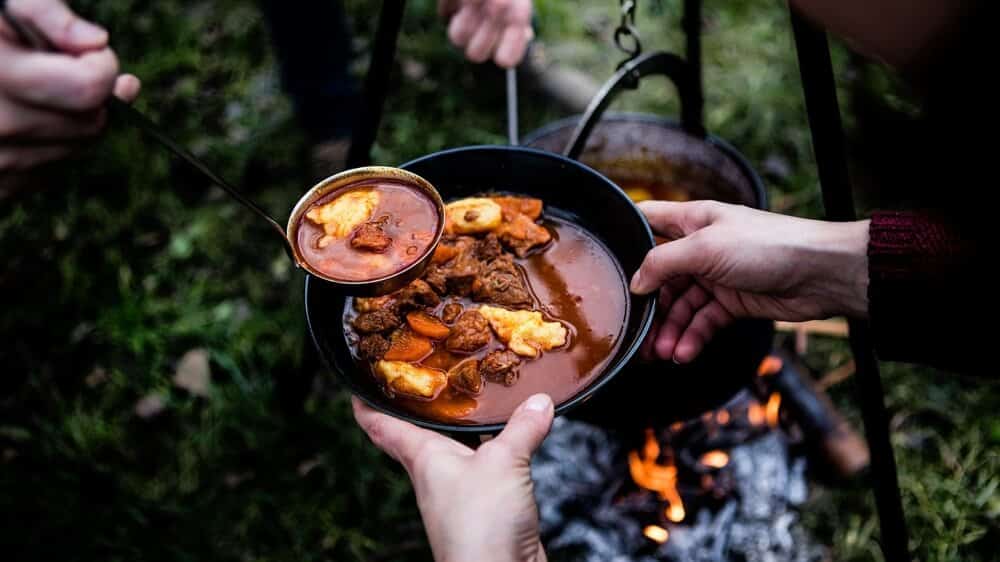
Tour the region on Croatia’s oldest passenger train: Osijek – Pécs (Hungary) via Beli Manastir
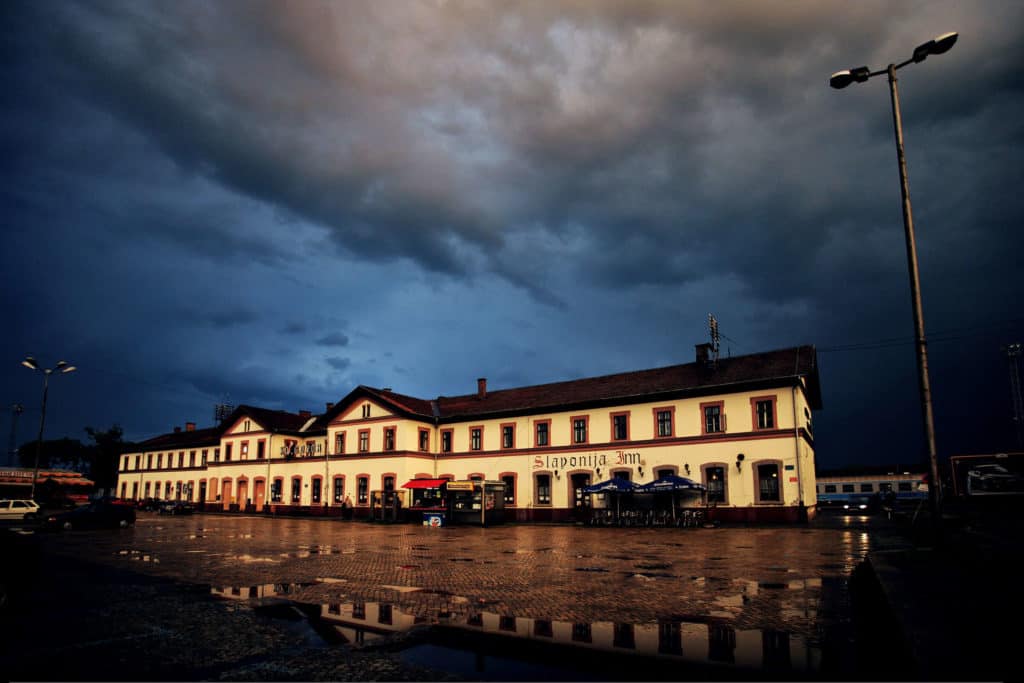
Opening on December 20, 1870, the train line from Beli Manastir to Villany is Croatia’s first passenger train line. Not until 1873 did Vienna’s Southern Austrian Railway company open the branch line from Pivka (Slovenia) to Rijeka via Matulji. Eventually, this line was extended and ran through the centre of Baranja. Specifically, it connected two key cities of Austro-Hungary, Pécs and Osijek.
In recent years, the line has been reopened. Not only can you tour a section of Baranja on it, but also make a day trip to Pécs. In the Hungarian section of Baranja, you’ll find several spas and public baths. Please note: international train routes in the east of Croatia remain in a state of fluctuation at the time of writing (spring 2021).
Day trips
Osijek

If you’re looking for something with more of a city feel, then choose Osijek. Not only is it by far the largest city in neighbouring Slavonia, but also it’s the cultural and economic capital. Notably, Osijek has one of Croatia’s best promenades, stretching for kilometres on both sides of the Drava. Also, its Old Town, Tvrđa has the best-preserved and largest ensemble of Baroque buildings in Croatia. Incredible. If you want to learn more, then read our detailed guide.
Vukovar

The only sizeable Croatian town sitting on the Danube, Vukovar offers the best of this river. From fishing and boating, to swimming and tours. Also, Vukovar has a wealth of contemporary street art murals on many building facades. If you want to learn more about Vukovar, then visit our detailed guide.
Đakovo

The Slavonian town of Đakovo has one of Croatia’s grandest cathedrals. Without question, its interior is a bona fide masterpiece. Religious or not, you shouldn’t miss it.
Novi Sad

Not only is Novi Sad the second-largest city in Serbia, but also it’s the capital of Vojvodina region. Similar to Baranja, Vojvodina was once autonomous from the country in which it is today. If you have a car, then the 110km from Osijek is no distance for a day trip. Notably, the city immediately faces the Austrian Petrovaradin Fortress on the Danube.
Where to stay
Baranja Camping and campsites
Camping Suza Baranja
Address: Suza, Maršala Tita 94/b
E-mail: camping.suzabaranje@gmail.com
Website: http://suzabaranje.com/
Facebook: https://www.facebook.com/camping.suzabaranje/
Camp Family Kopačevo
Address: Autocamp Family Kopačevo
E-mail: info.zlatna@gmail.com
Web: https://kamp-kopacevo.com/homepage/
Facebook: https://www.facebook.com/Family-Camping-Kopa%C4%8Devo-Zlatna-%C5%A0koljka-DOO-387253918003819
Private accommodation
If you want to see a list of some private accommodation options, then look here.
Hotels and hostels
If you prefer to see a list of hostel and hotel options, then look here.
Where is Baranja Croatia? Baranja map
Baranja is a geographical and historical region between the Danube and the Drava rivers. Today, the region is divided between Hungary and Croatia. In Hungary, the start of the historical northwest border of Baranja is contested. However, this is a guide only to Baranja in Croatia, which is easy to define. Baranja Croatia’s borders are the Danube, the Drava and the Croatian-Hungarian border. It is the most north-easterly of all Croatia’s regions. Today, Croatian Baranja is a part of Osijek-Baranja County.

How to get to Baranja and get around
Flights
The nearest airport to Baranja is Osijek. However, there are three major international airports that are not too far. Specifically, they are Belgrade, Zagreb and Budapest, with Belgrade being the nearest. If you want to read more about the Croatian airports, then check Osijek here and Zagreb here.
Road, by car

Running 702 kilometres, from Budapest to Ploče, the European E73 runs through Baranja. In Croatia, this Baranja section is known as the D7. If you’re travelling any considerable distance to reach Baranja, then you’ll likely end up on this road. The D7 connects to the E70 around 20 kilometres south of Đakovo. Therefore, you need to get on the E73 to reach Baranja if also travelling from Zagreb or Belgrade.
Looking for a fast, reliable and trouble-free transfer to or from Baranja? Contact TC transfer partner Adriatic Transfers for your one-stop solution.
Train
Only one train line runs through Baranja. Subsequently, some parts of the region are not very well covered. As has been noted, the Baranja line runs from Osijek to Beli Manastir. Specifically, the train stops at Darda and Čeminac. Via Osijek, Baranja is connected to the Croatian and European train networks.
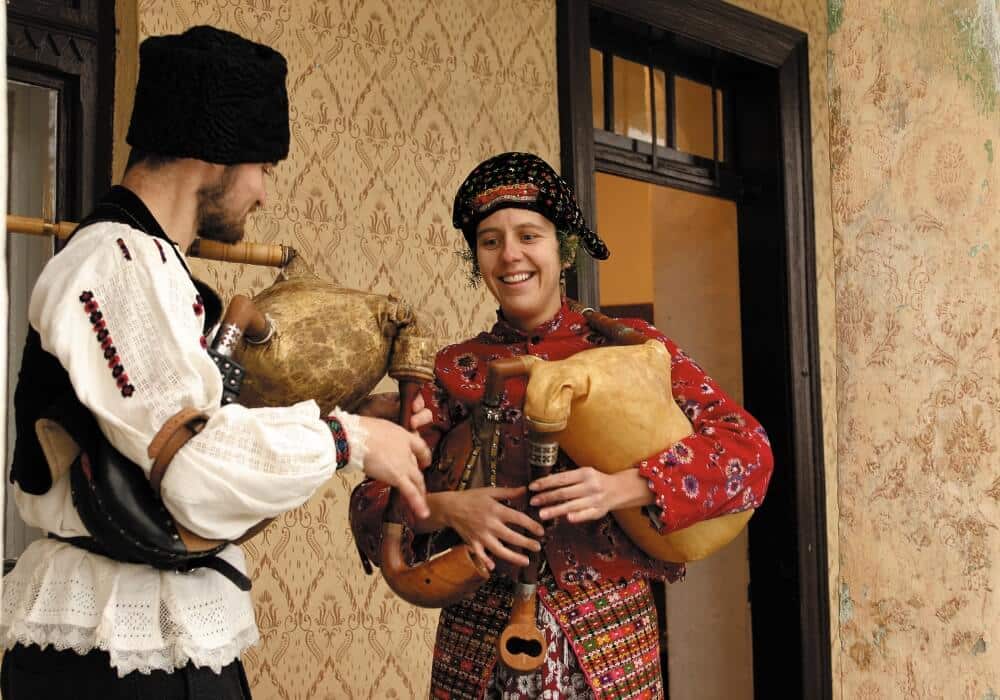
More information
Tourist Board of Baranja
Kralja Tomislava 70, Beli Manastir.
Phone: + 385 (0)31 70 20 80
Fax: +385 (0)31 49 59 75
Email: info@tzbaranje.hr
Baranja tourist board website.
Visit Slavonia Baranja (Tourist Board of Osijek-Baranja County)
Županijska 4, 31000 Osijek.
Phone: +385 (0)31 214 85
Email: info@tzosbarzup.hr
Visit Slavonia Baranja website.
Tourist Board of Municipality Bilje – Kopački rit (Turistička zajednica Općine Bilje – Kopački rit)
Kralja Zvonimira 10, 31327 Bilje.
Phone: +385 99 263 6780.
Email: info@tzo-bilje.hr
Working hours: 8am – 4pm.
Tourist Board of Municipality Bilje – Kopački rit website here.
Kopački rit Nature Park (Park prirode Kopački rit)
Kopačevo Reception Center.
Mali Sakadaš 1, 31327 Kopačevo, Bilje.
Telephone: +385 31 445 445; +385 31 752 320; +385 31 752 322.
Fax: +385 31 752 321
Email: prijemni.centar@pp-kopacki-rit.hr
Kopački rit Nature Park website here.
Both the author and Total Croatia would like to thank the following for their help in creating this guide: Mario Romulić, Ivana Jurić and the Tourist Board of Osijek-Baranja County, Domagoj Butković of expert travel guides to Slavonia and Osijek-Baranja County, Kulen travel.
To follow the latest news from Baranja, check out Total Croatia News pages.









